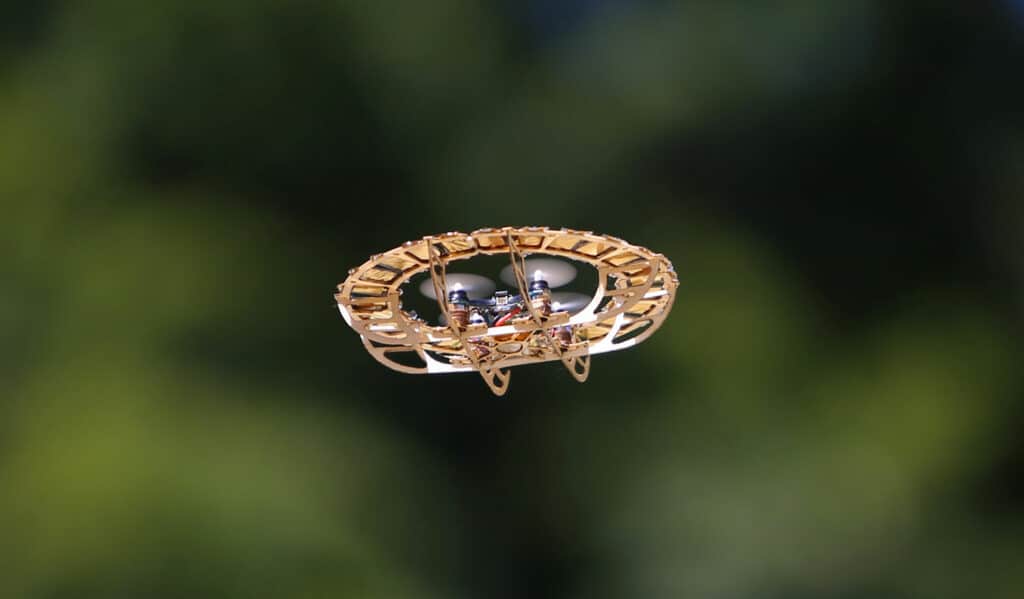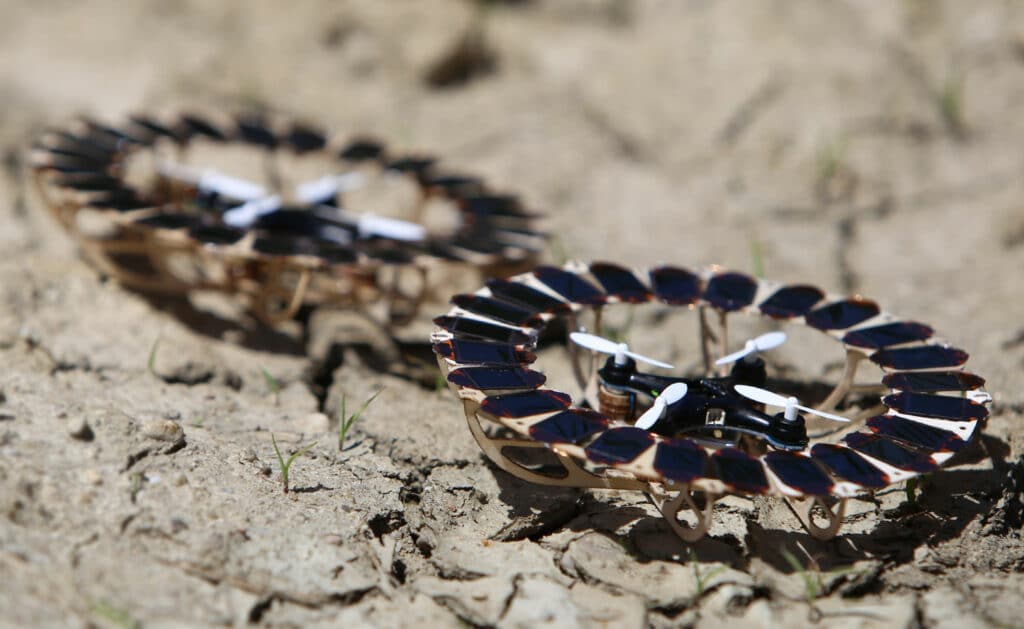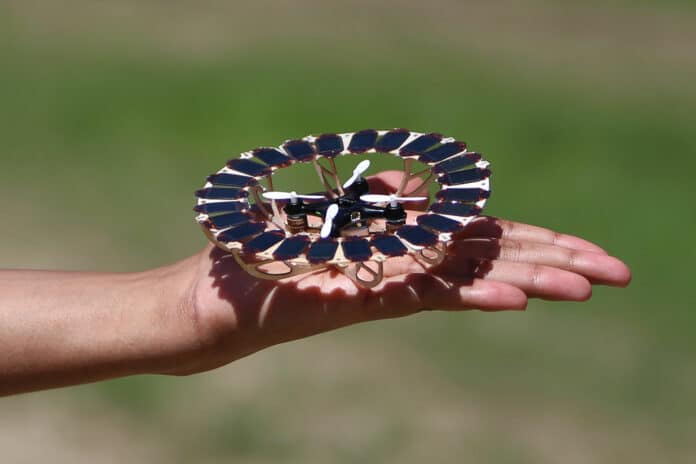Researchers at the Johannes Kepler University Linz have developed a new technology aimed at enabling autonomous energy, which is crucial for keeping power systems running independently for extended periods of time, both on Earth and in space.
Current conventional energy solutions such as batteries, fossil fuels, and other alternative energy generation methods have their limitations. These include their size, stationary charging requirements, negative impact on the environment, or low power density.
However, ultra-thin and flexible solar cells made from a new material called “perovskite” have been found to be an efficient and lightweight solution for generating self-sufficient energy over extended periods of time.
Researchers at the JKU (Department of Soft Matter Physics and the LIT Soft Material Lab have developed ultra-lightweight quasi-2D perovskite solar cells that have an unprecedented power output of up to 44 watts per gram with a high level of stability.

“Ultra-thin and lightweight solar cells not only have enormous potential to revolutionize the way energy is generated in the aerospace industry but there are also a wide range of applications that include wearable electronics and the Internet of Things, that can also benefit from this new technology,” said Christoph Putz, one of the study’s lead authors. “Lightweight, adaptable, and highly efficient photovoltaics are the key to developing the next generation of self-sufficient energy systems.”
The new ultralight and flexible solar cell module is only 20 times thinner than a strand of human hair and can power a wide range of electronics in areas with light. The solar cells are less than 2.5 micrometers thick and made of quasi-2D perovskite material, which has an impressive 20.1% efficiency.
Additionally, these cells have a high degree of flexibility and a remarkable power density of 44 W/g, which is much higher than other types of solar cell technologies.

Creating a reliable and stable solar cell that is both flexible and lightweight requires a balance between low gas and moisture permeability, transparent plastic substrates and sturdy photovoltaic materials. The cells’ operational stability was significantly improved by applying a transparent aluminum oxide layer to the thin film and then optimizing the solar cell material itself.
Researchers have integrated ultra-light solar cells into a commercially available CX10 miniature quadcopter, which was dubbed the Solar Hopper, to demonstrate the new technology’s capabilities. The drone’s frame was fitted with 24 of these cells, which made up just 1/400 of its total weight. With this configuration, the drone was able to perform consecutive charge-flight-charge cycles without wired recharging, making it highly sustainable and efficient.
The new technology could potentially be used in search and rescue operations, large-scale mapping, generating solar power in space, and exploring the solar system. Self-sufficient solar-powered aviation can be a game-changer for space exploration and research. More recently, the Ingenuity Mars helicopter impressively demonstrated just how important self-sufficient solar-powered aviation is by being the first aircraft to successfully launch from Earth and land on another planet.
Journal reference:
- Bekele Hailegnaw, Stepan Demchyshyn, Christoph Putz, Lukas E. Lehner, Felix Mayr, David Schiller, Roland Pruckner, Munise Cobet, Dorian Ziss, Tobias Maria Krieger, Armando Rastelli, Niyazi Serdar Sariciftci, Markus Clark Scharber & Martin Kaltenbrunner. Flexible quasi-2D perovskite solar cells with high specific power and improved stability for energy-autonomous drones. Nature Energy, 2024; DOI: 10.1038/s41560-024-01500-2
